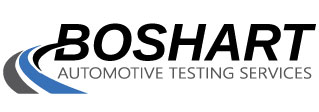When testing vehicles for durability and mileage requirements we always come back to the reason we test so thoroughly—the customer.The reason we test, test and test a vehicle is, after all, the end consumer’s safety and enjoyment of the vehicle. Over the past decade we have noticed the pros and cons of testing a vehicle through the use of an dynamometer and other mechanical testing devices versus real-world, real driver testing. Both methods are a great way to evaluate a given vehicle, however, many vehicle testing providers omit the human element.
While mechanized testing, such as a dynamometer, can produce excellent testing and calibration results; it falls short when factors like drivability come into play. While a machine can pump out facts and figures, a human being will tell you whether or not, for instance, the cab is cramped or if there’s a rattle in the dashboard. As with any product, manufacturers strive to keep their target market in mind. In this case, if a vehicle passes durability and mileage tests, but the cab is just uncomfortable or the controls are counter-intuitive, it may hurt the sales of the given vehicle. Real-world, driver testing can help avoid this problem.
At Boshart, we offer a variety of testing options. We realize that our customers’ reputation is on the line as they bring a new vehicle to market. Therefore, we are committed to thorough vehicle testing, both in the lab and on the road. Our on-road driver/technicians perform drive cycles based on the specific testing needs of each vehicle. From high altitude to inclement weather, our driver/technicians along with on-board data collection systems provide the statistics and human experience necessary to provide well-rounded testing reports.
Some of our expert on-road testing services include:
- Emission system durability—exposure to real-world driving patterns and conditions
- Full useful life testing of the On-Board Diagnostic (OBD) system
- Brake and tire testing
- Passenger comfort systems
- Vehicle exposure to extreme conditions such as heat, cold, altitude, vibration, dust, sand, etc.
- Powertrain and Transmission
- Component evaluation
Are you getting the thorough testing results you need? Do you want your vehicle to exceed customer expectations? We can help you get there. Please contact us for information on our complete vehicle testing services.
